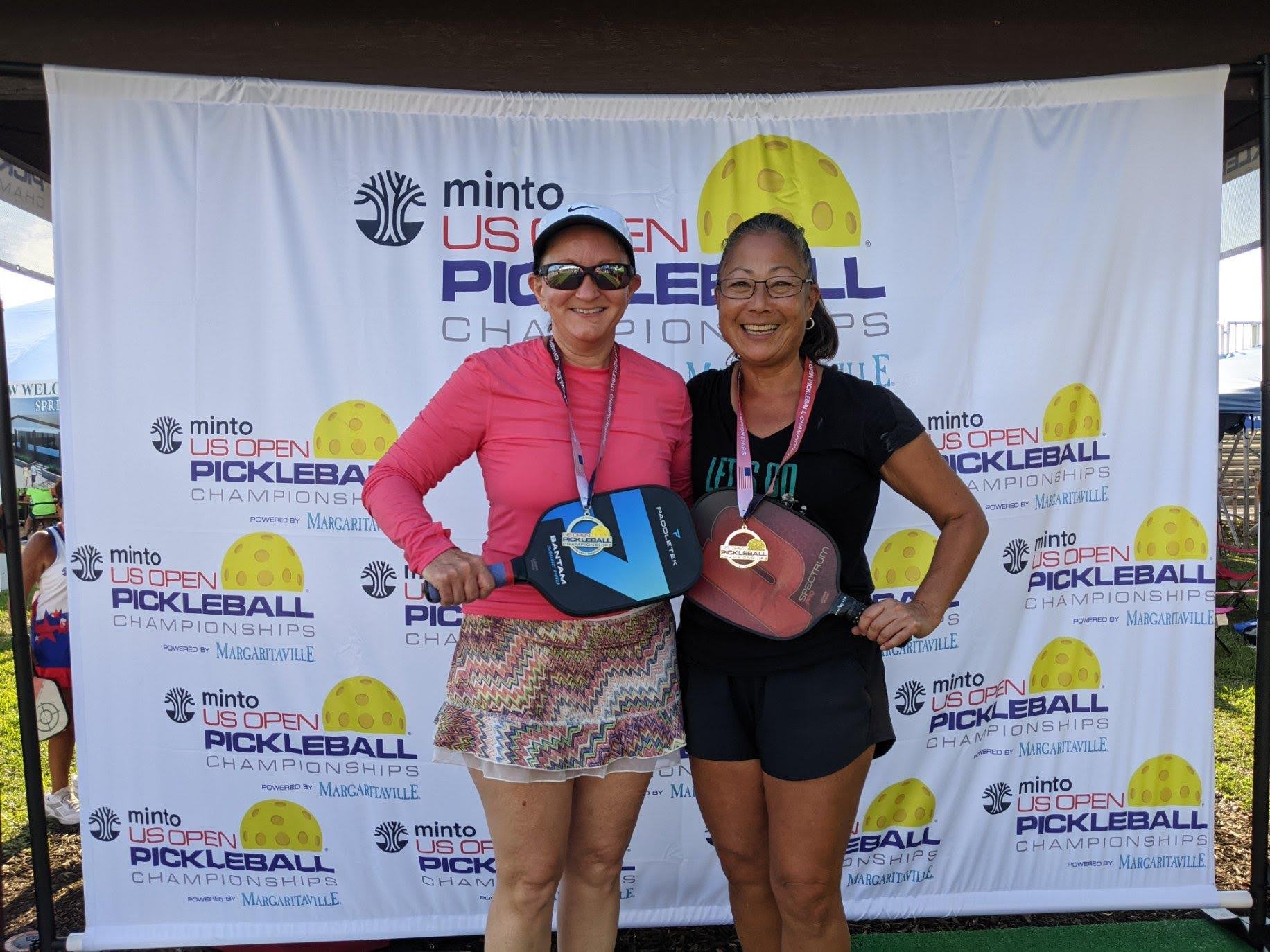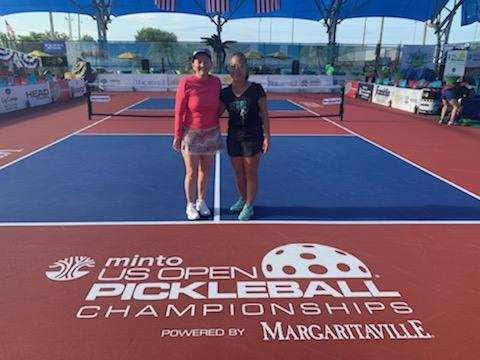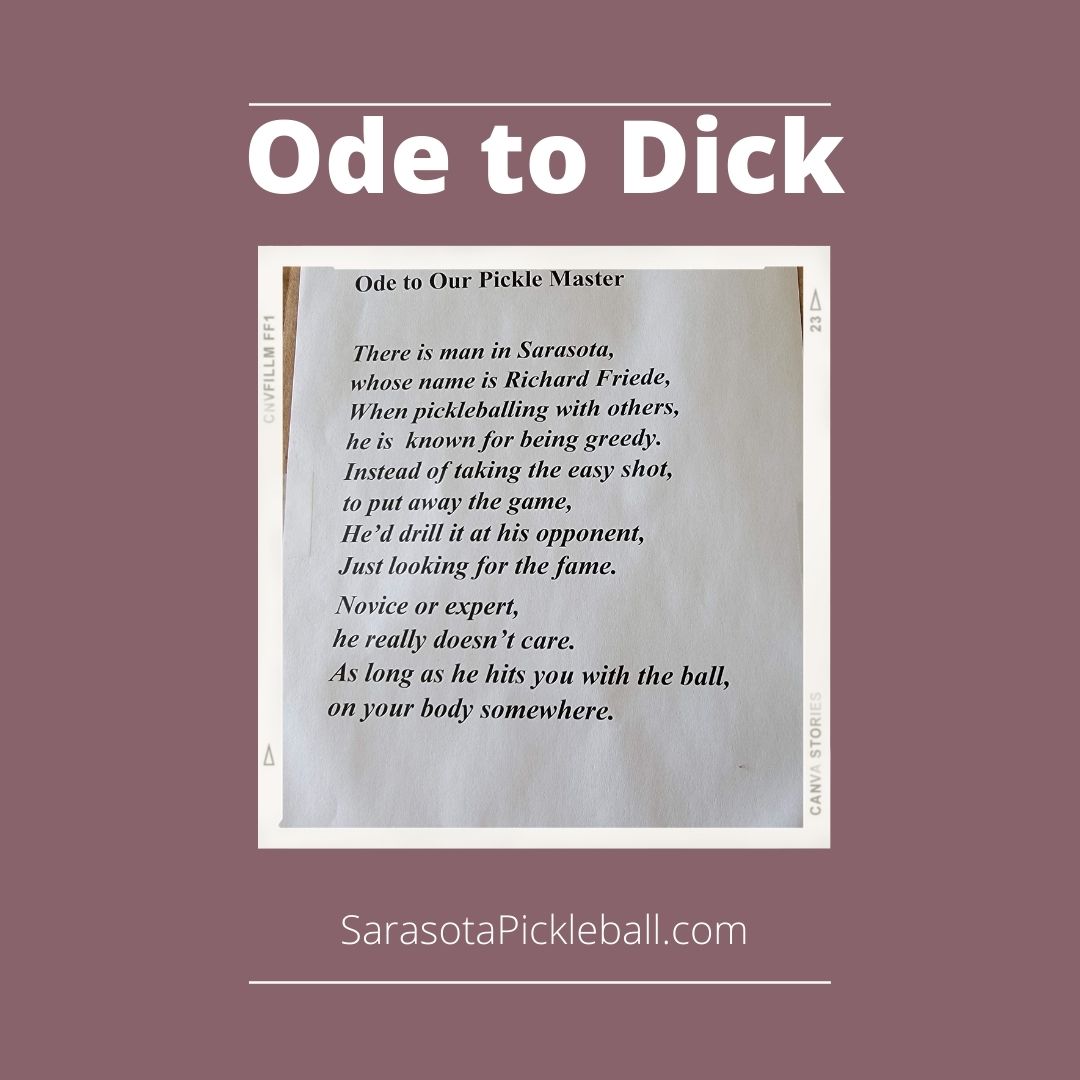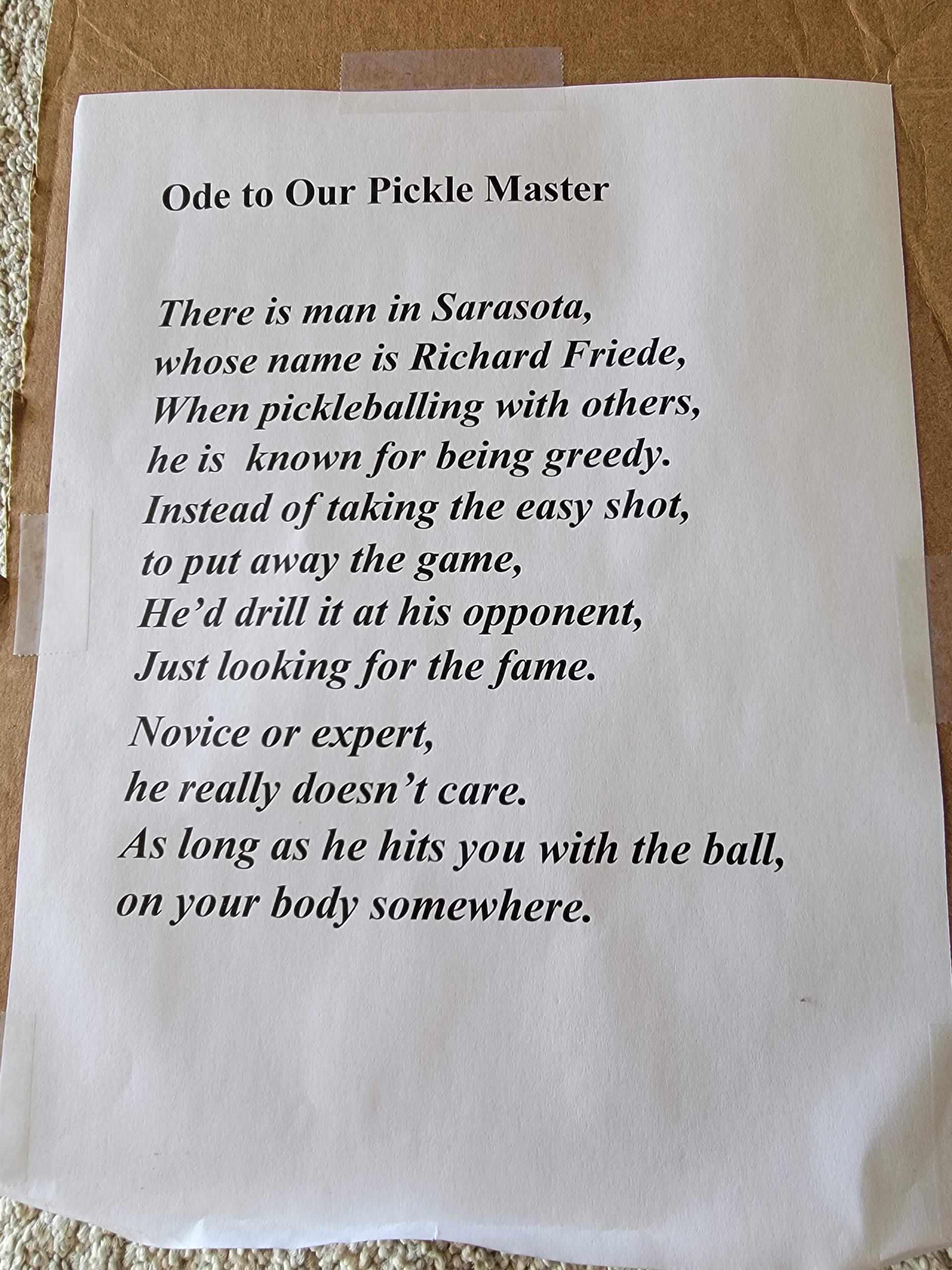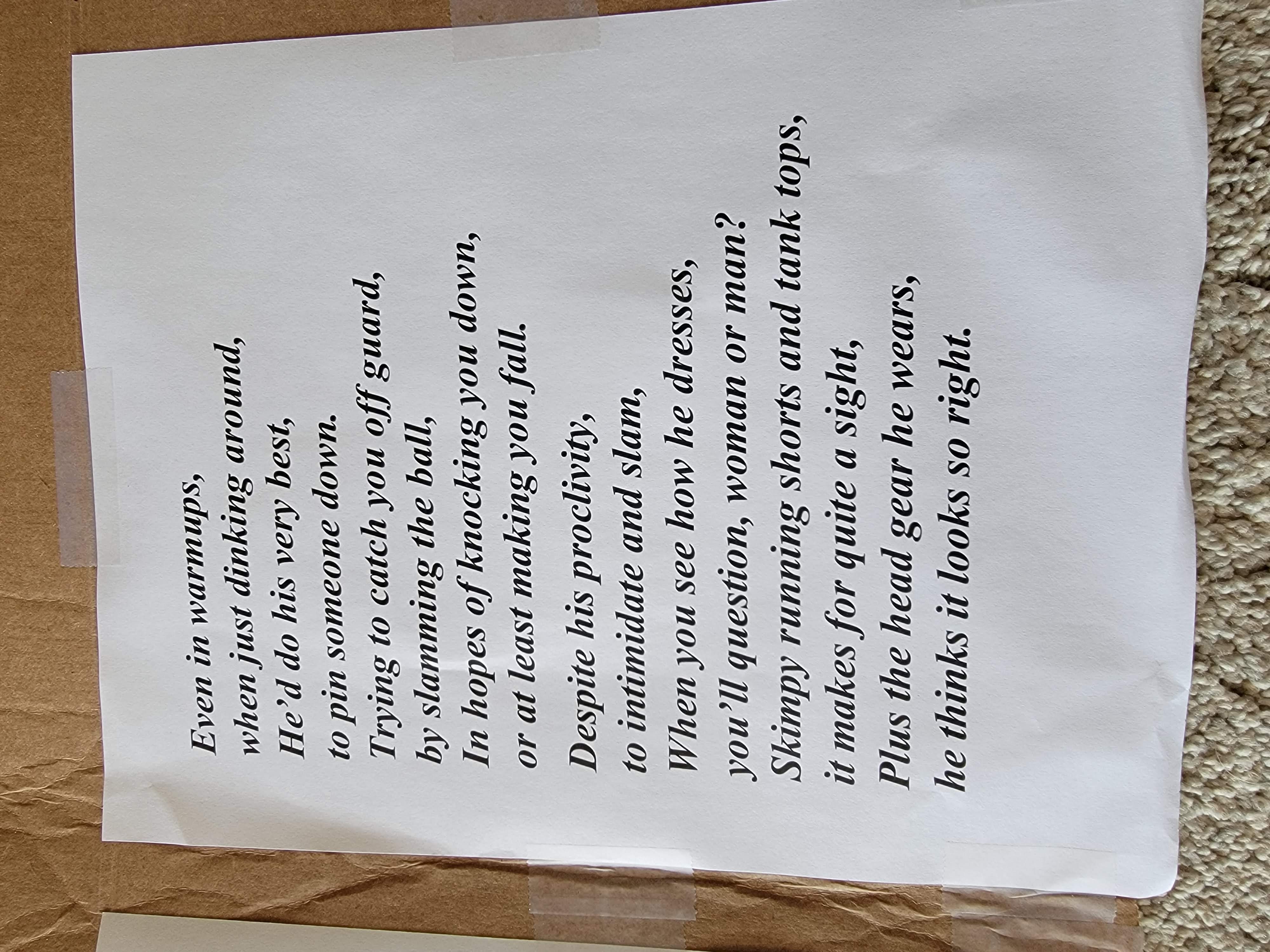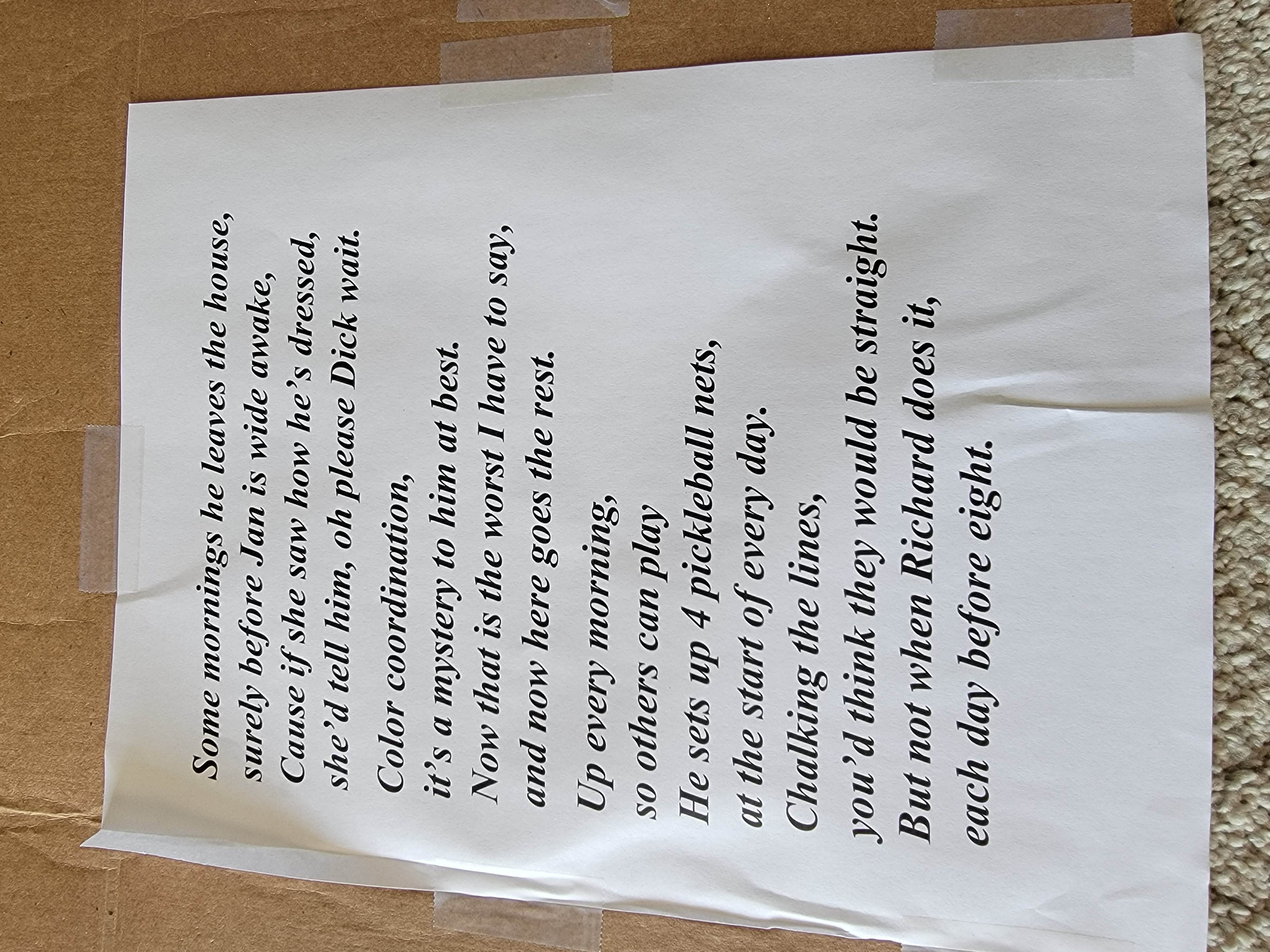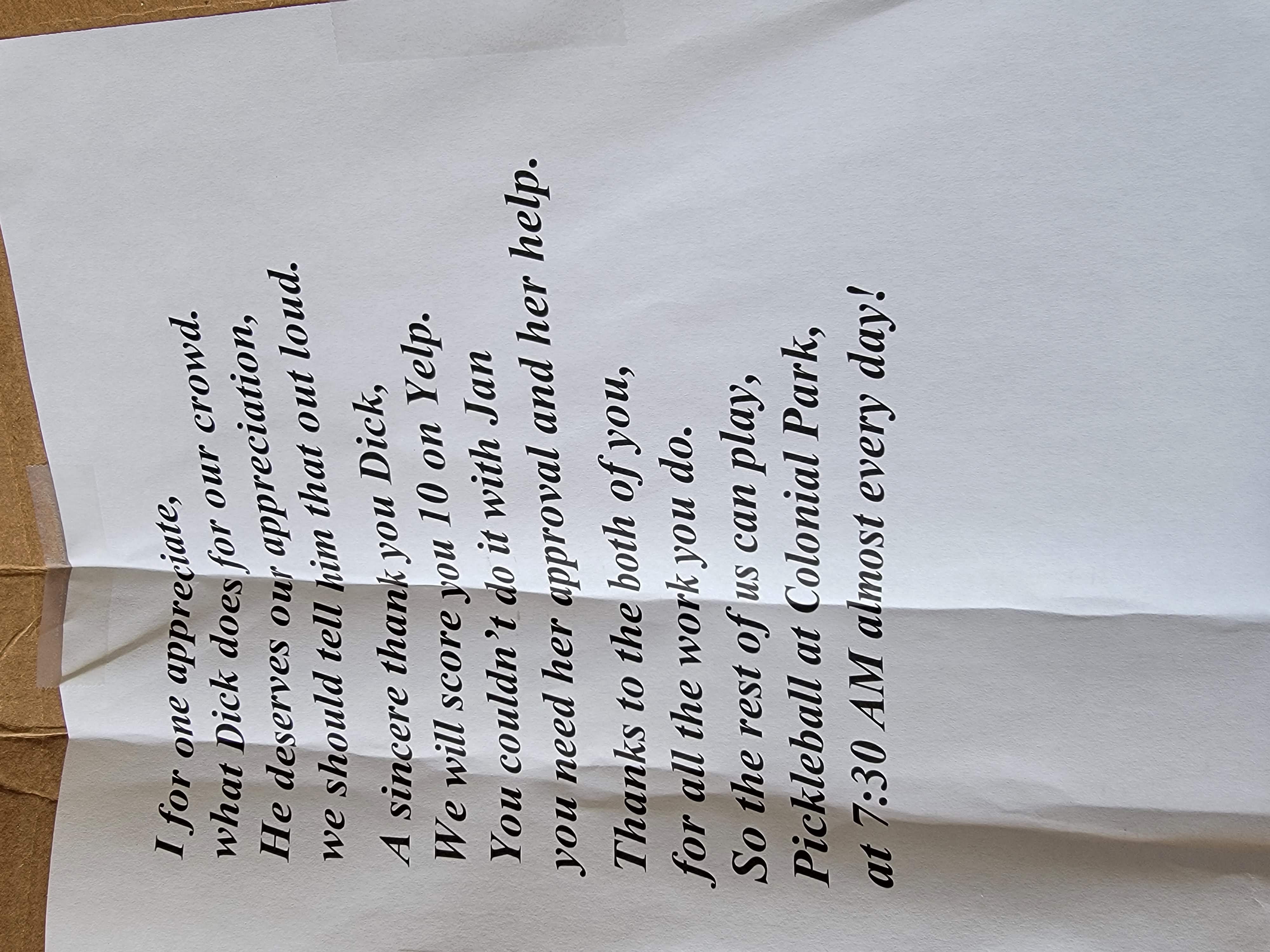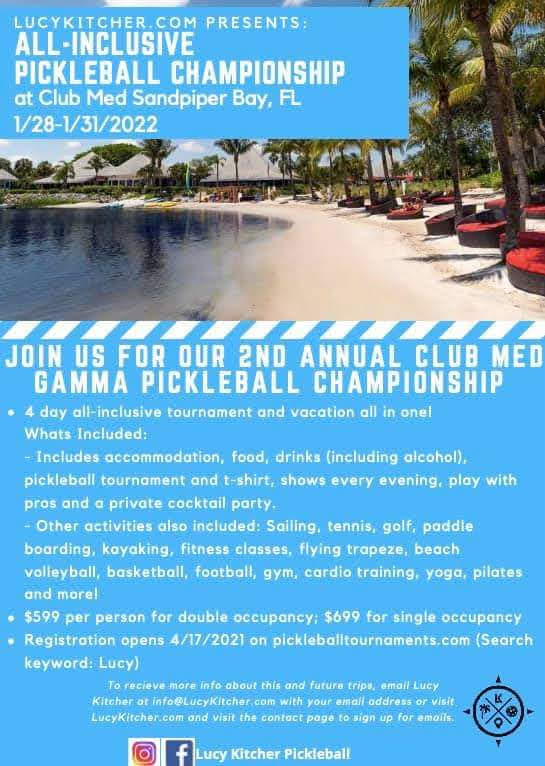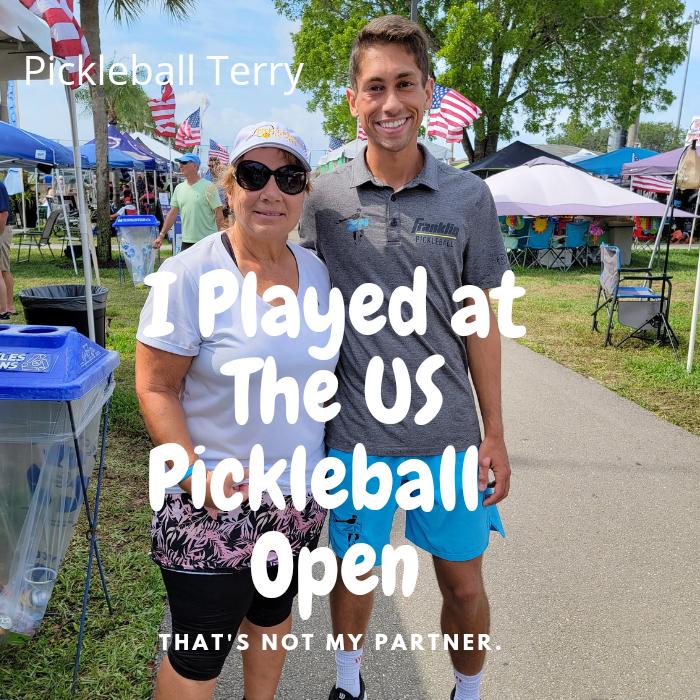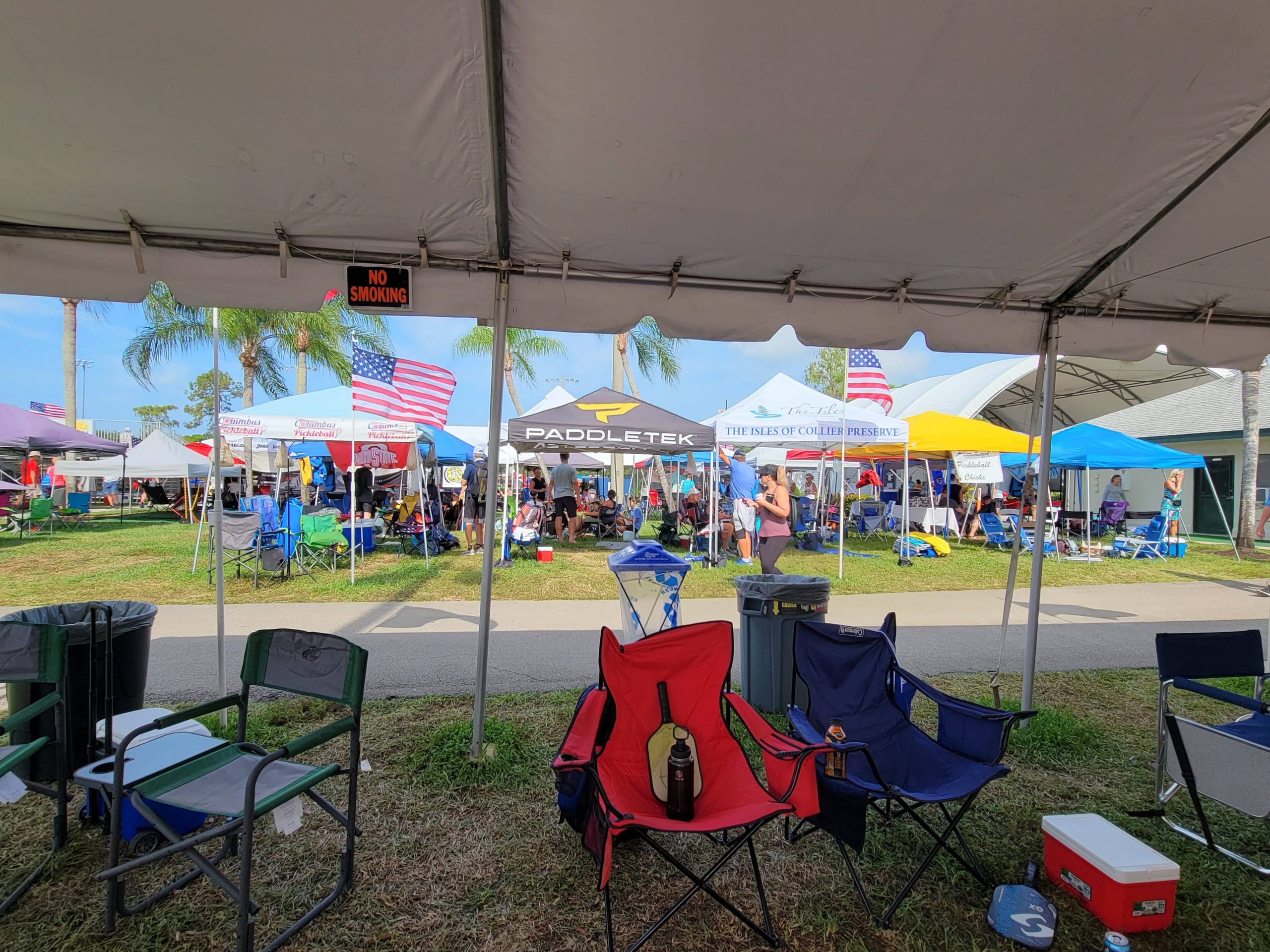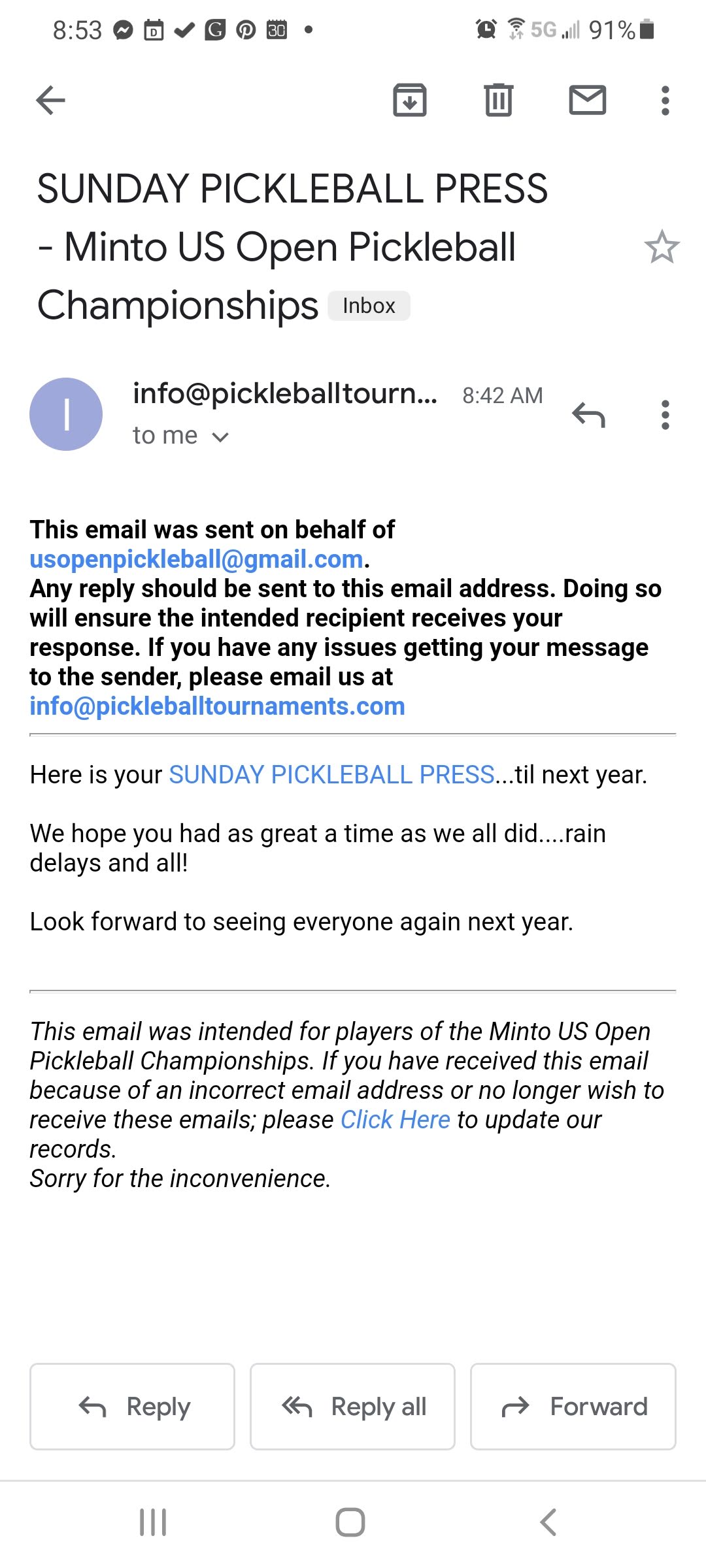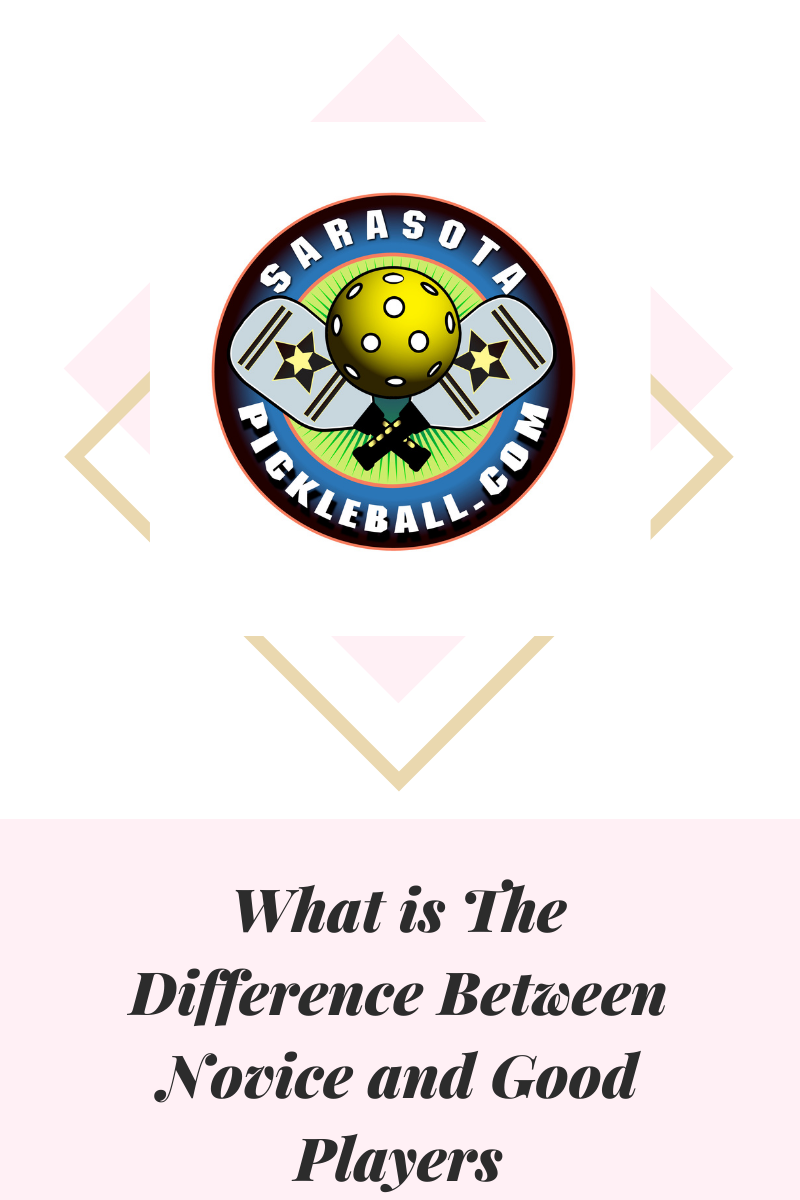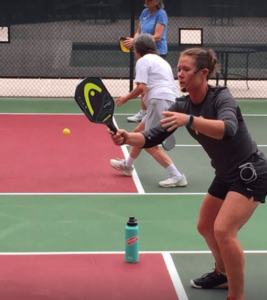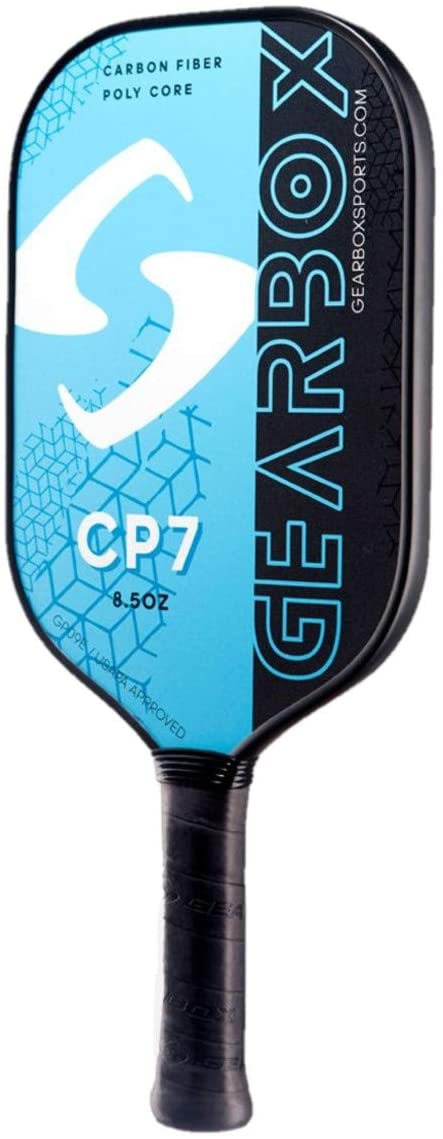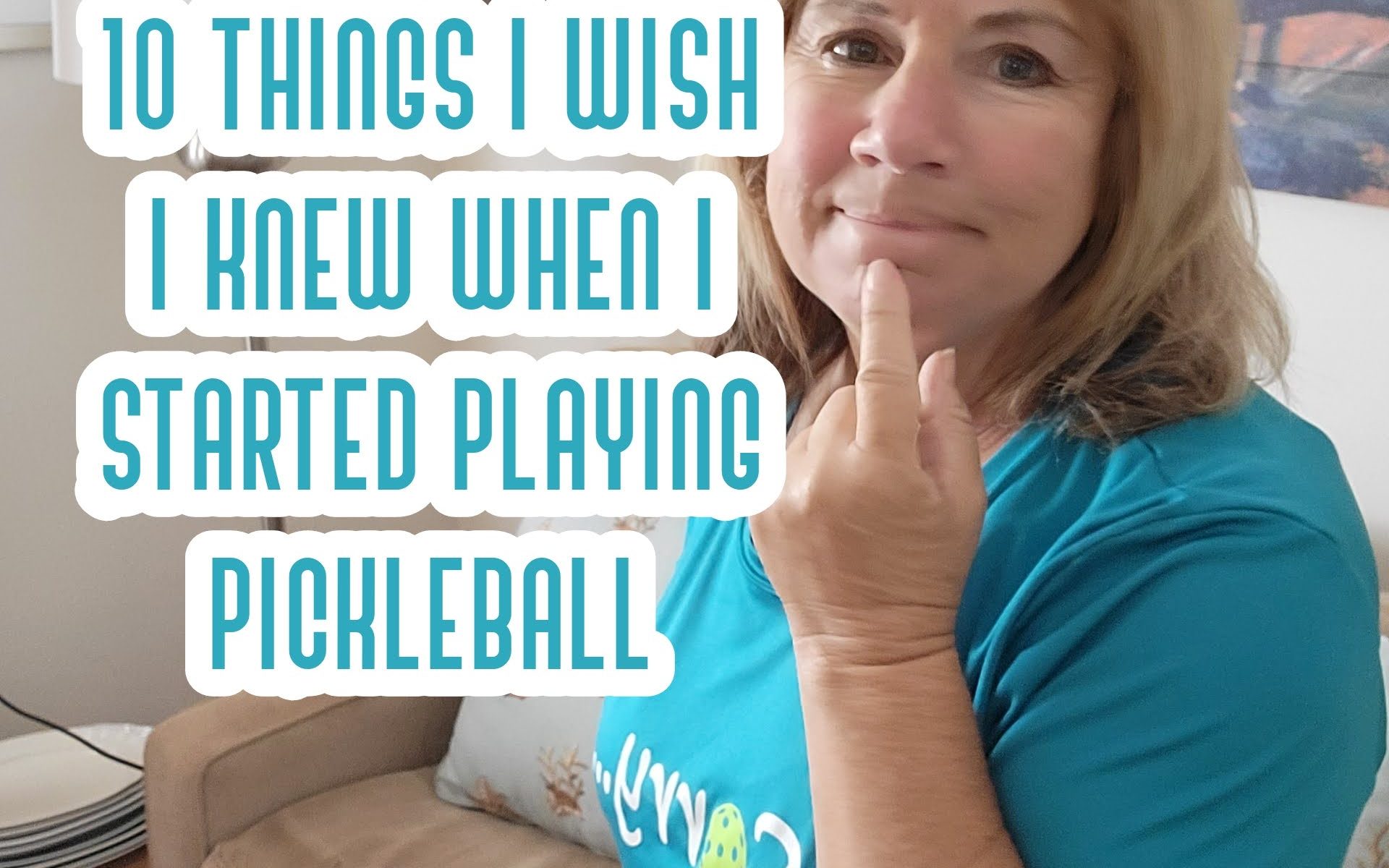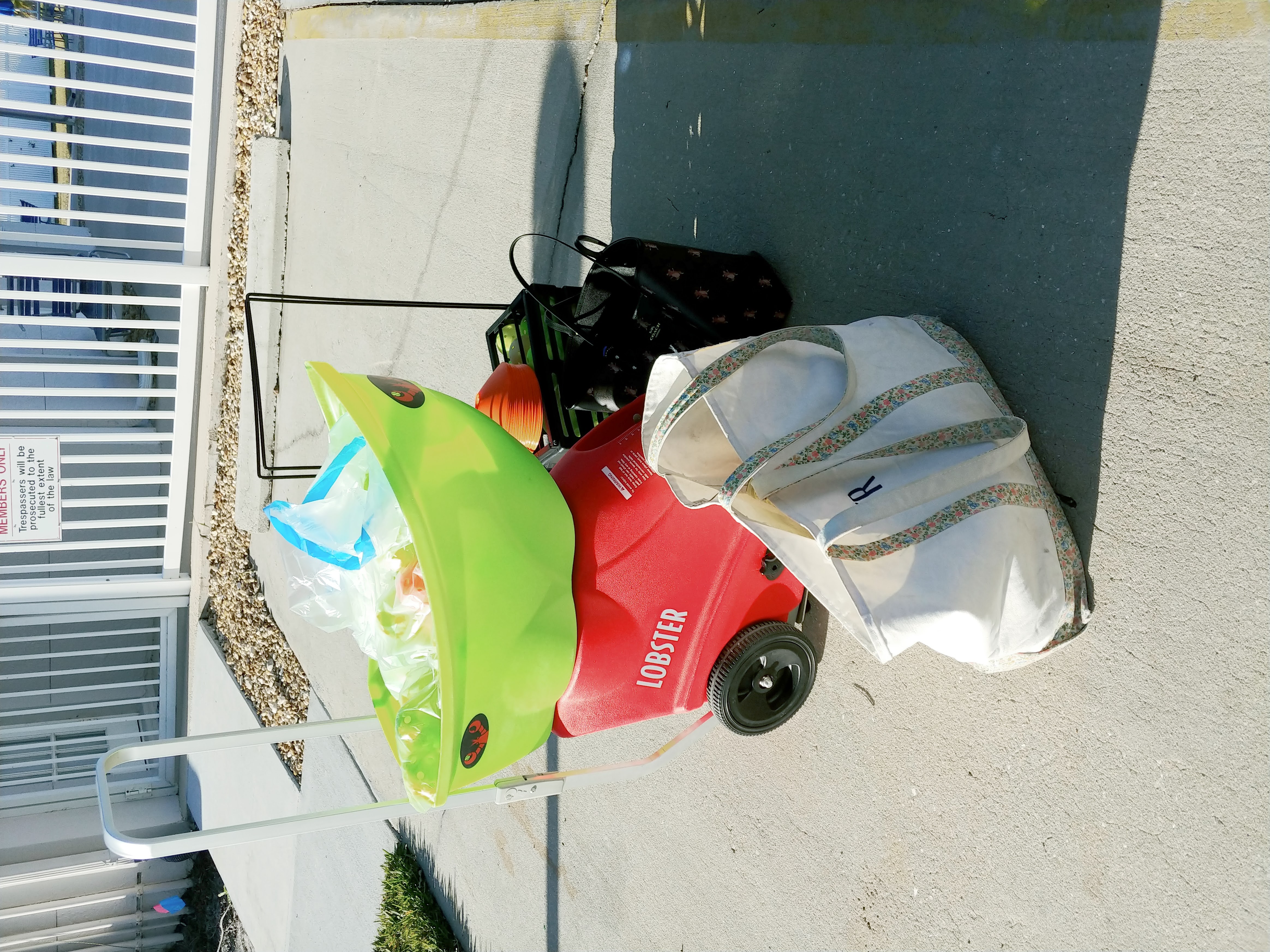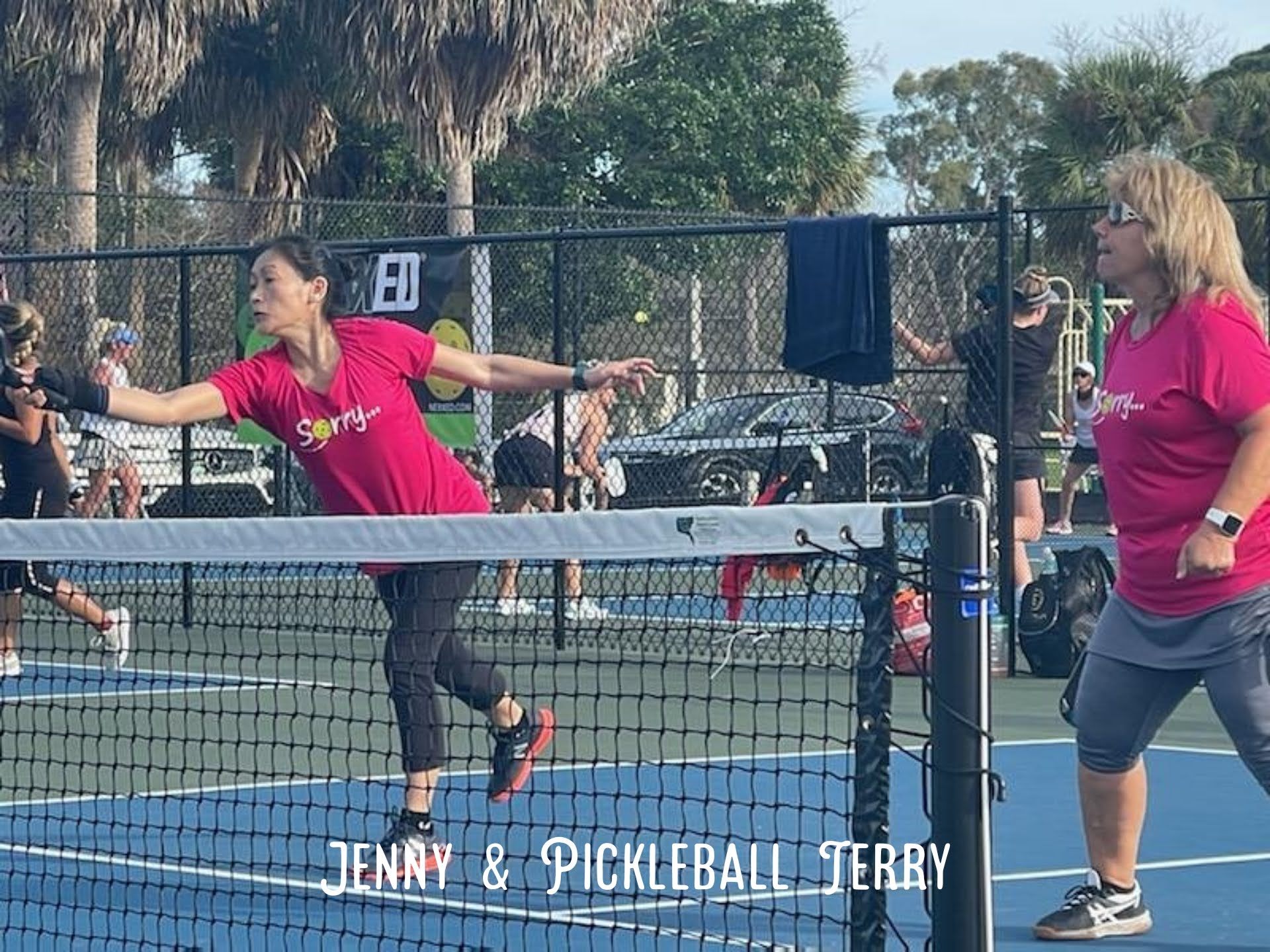I was standing on the court between pickleball games and passing the time by talking to a relative newbie to pickleball. I said to him, “Did you know when we all started playing pickleball in Sarasota we all played indoors?” He…dead silence and a look of shock on his face. But that is right, we did not play pickleball outdoors. We only played indoors, as shocking as that now sounds.
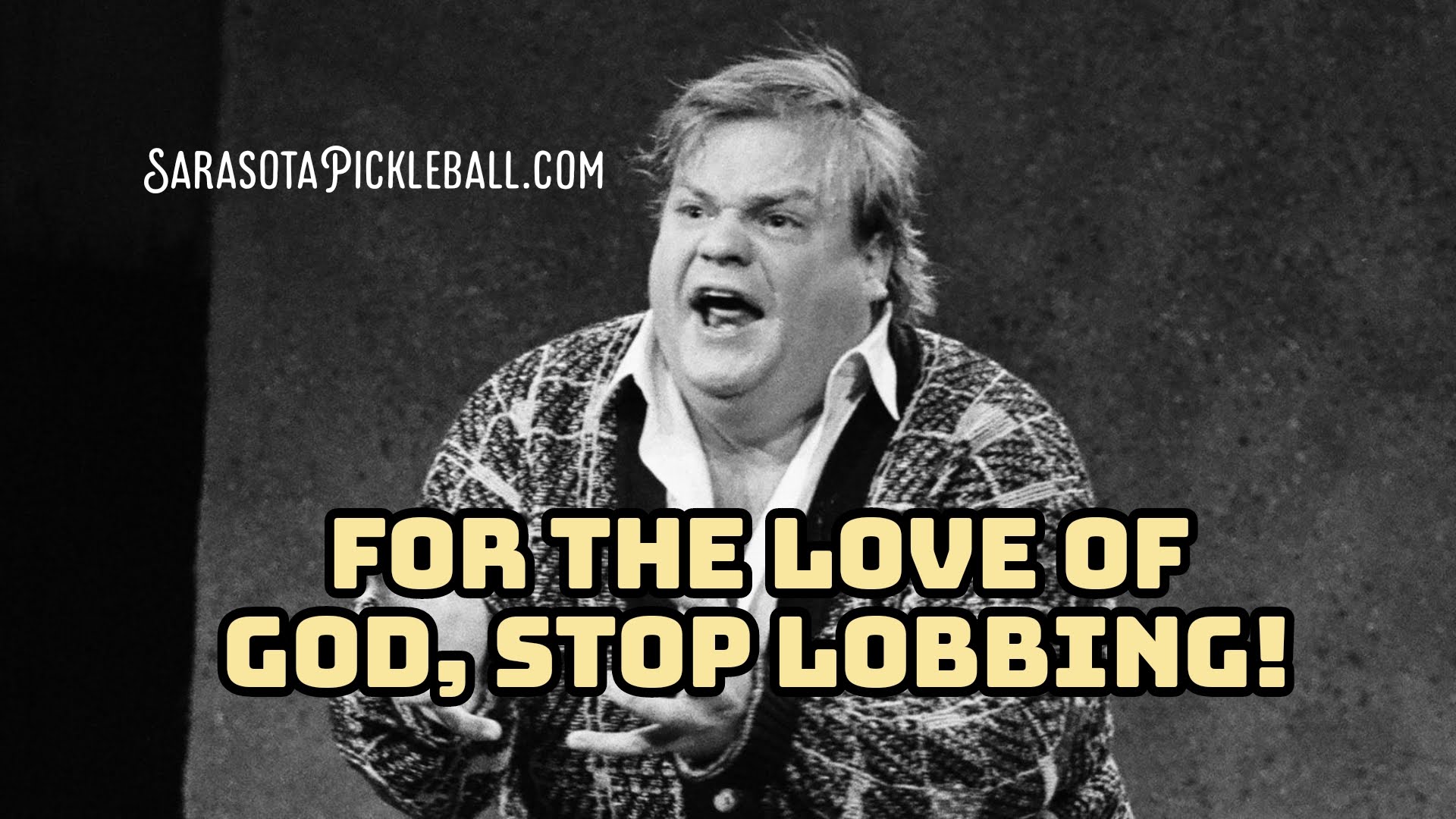 We had a certain schedule and played inside at Arlington Park on certain days, and other days, we played inside at Colonial Oaks, RL Taylor, and YMCAs when they were the YMCAs. Then more places opened up and we had Newtown and Longwood Park. The Salvation Army on Tuttle offered pickleball on a couple of days. Never, NEVER did we venture out and play pickleball outdoors. Most of us didn’t have our own nets, and we preferred the air conditioning and no wind inside. Nets were provided at all the indoor facilities and the Salvation Army even started putting up the nets and taking them down for us. The cost was all of $2.00 and we paid with cash. You always had your bag of ones and quarters in your backpack.
We had a certain schedule and played inside at Arlington Park on certain days, and other days, we played inside at Colonial Oaks, RL Taylor, and YMCAs when they were the YMCAs. Then more places opened up and we had Newtown and Longwood Park. The Salvation Army on Tuttle offered pickleball on a couple of days. Never, NEVER did we venture out and play pickleball outdoors. Most of us didn’t have our own nets, and we preferred the air conditioning and no wind inside. Nets were provided at all the indoor facilities and the Salvation Army even started putting up the nets and taking them down for us. The cost was all of $2.00 and we paid with cash. You always had your bag of ones and quarters in your backpack.
And balls….we had one kind of ball. The standard green Jug ball that is cheap to buy. The facilities would supply them. At first, they would leave a bucket of balls for the players to pick from and return them to afterwards. They didn’t last long as they quickly got soft or would crack, and some places started handing balls out one at a time, so you would have to bring a cracked ball to the desk to get a new Jug ball.
Also, for example, Arlington had four courts and it ranged from the beginner court located closest to the door, and the quality of the players got better as it got to the 4th/last court where the strongest players played. Things would get tricky when a not-so-good player would try to play on a court that he/she wasn’t really qualified to play on. I would see fights break out, feelings getting hurt, and people complaining at the front desk. Oh boy. Lots of drama.
I also remember the LONG WAIT during the winter season. We would wait 45 minutes to an hour between games. UGH! But you got a lot of time to visit with fellow players. We also had pot lucks and a couple of us would reserve the indoor courts for private play. People would wait to see if they would get an invite. Some people wouldn’t. They still talk about that.
I had a women’s league inside at Colonial Oaks for 2 years that was a wonderful time. Someday, after COVID, I hope to resume that and expand on league play to include men’s and mixed.
Two years ago, one of the last things that Coach Russell and Terry W. did was approach Church of the Palms and ask them if they would consider having pickleball. After a little negotiations, the Church offered pickleball in their beautiful new gym. It has been an outstanding relationship.
Speaking of Coach Russell, the man was instrumental in getting major pickleball pros to come to Sarasota and host clinics. I took clinics from Kyle Yates and Lucy Kitcher for all of $30.00. What an honor to meet people like them. Those clinics were held at RL Taylor Community Center which also is a wonderful place to play indoor pickleball.
I remember the first time i played outdoors. It was on the courts at Newtown. I was so thrown off. The net looked too high, the court looked too big. It was a totally different experience. I didn’t like it. There was , wind and sun in my eyes and I preferred playing inside. Even all the tournaments I played in were indoors. Summer came in 2019 and the indoor facilities were closed because the kid’s camps were using the indoor space, except the Church of the Palms and the Ys had some limited time to play.
Then Dick Friede starting something amazing, he started borrowing portable nets and setting them up every morning outside at Colonial Oaks Park. It was a slow start but now has become a popular place to go. The success is mainly because Dick with his partner, Jan, are reliable and you can count on them being there everyday.
In the fall of 2019, the indoor facilities opened back up after school started again, and we all happily went back to playing indoors. Players began to become more interested in playing outside especially on the weekends when most facilities were closed, and we ventured to the courts of Siesta Key. Oh boy, did we clash with the tennis players who thought we were not worthy to play on their courts. God help you if a pickleball rolled on their court.
In 2020 COVID hit and everything changed. We were forced to play outside as the indoor facilities shut down. There were a couple of weeks when we were not allowed to play even on the outdoor courts as the country went into lockdown.
But life goes on, and here it is, the summer of 2021 and we are all now devoted outdoor pickleball players. We have learned to love playing outside and playing inside is no longer as desired. We play in the heat, the cold, the wind, and even the rain. We have pretty much taken over the courts at Colonial Oaks Park during the mornings, much to the dismay of the few tennis players that want to play there. After all, we live in beautiful Sarasota, FL. Who wouldn’t want to play outdoors.
And the wait time is less. I never will wait 45 minutes to play a ten minute game as I did at Arlington. No thank you!
Hopefully soon, Sarasota will construct the outdoor courts they have been promising us. The Longwood project has been delayed for another year. and don’t hold your breath for the courts off of Pompano. That may be 3 years into the future.
As pickleball takes off as the fastest growing sport in the country, I have seen on the Internet, new outdoor massive pickleball complexes popping up. There is a trend of people buying or renting warehouse and putting courts in; some keeping them for private use and others charging for public to play. Malls are converting empty space into pickleball complexes. It’s really an exciting time to be involved in pickleball.
Lastly, along with all the different paddle brands out there (I’m a Gearbox authorized dealer), there are now over 300 brands of pickleballs. The Jugs balls I still use in my clinics and for my ball machine, but people are now very picky about what ball they are playing with indoor and outdoor. I once saw one player throw a ball down and announce. “I won’t play with that ball!” Wow! How far we have all come.
Keep playing pickleball!
Pickleball Terry
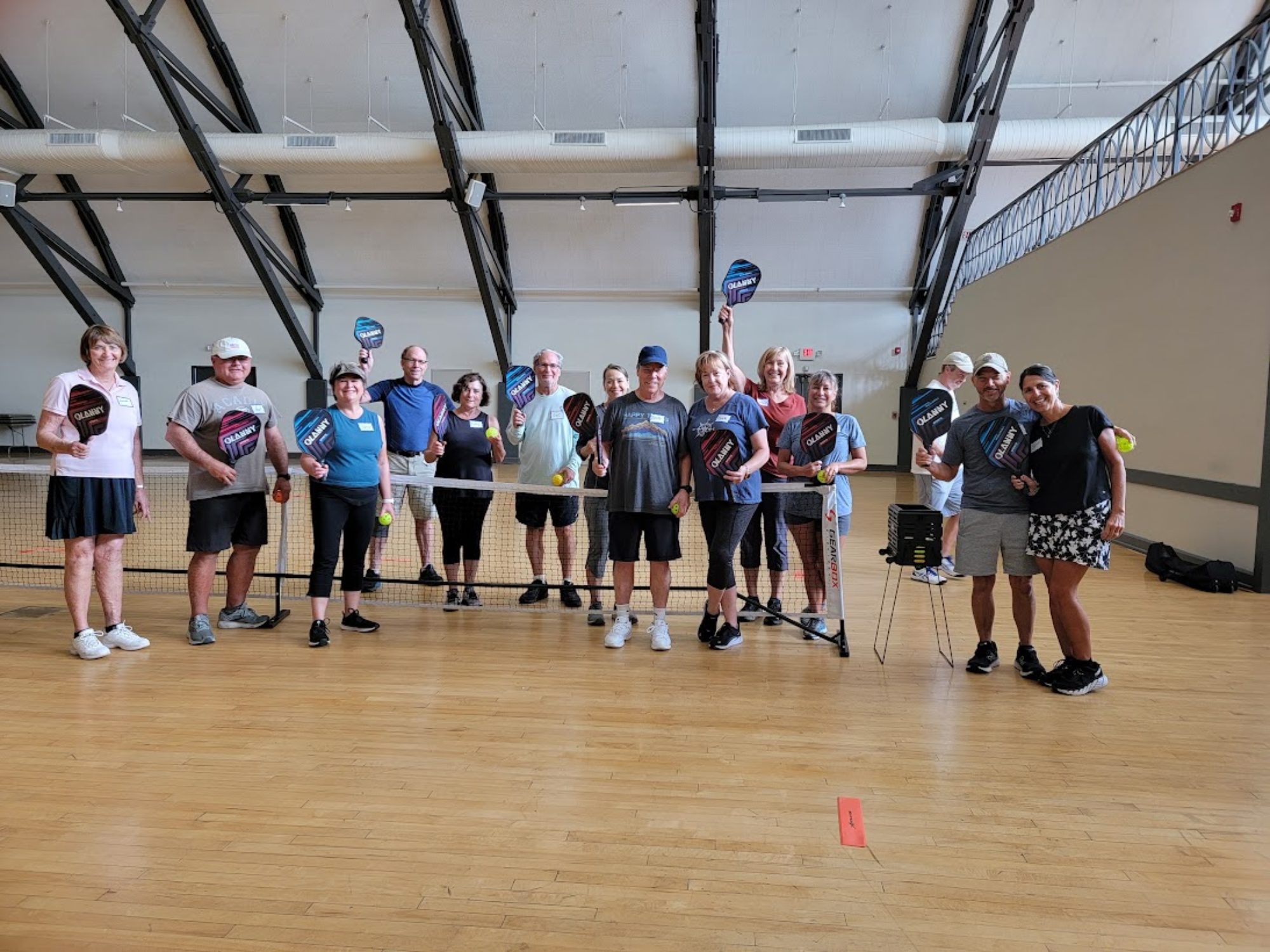
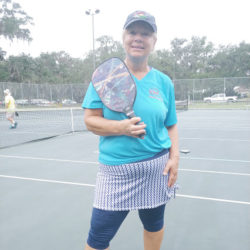
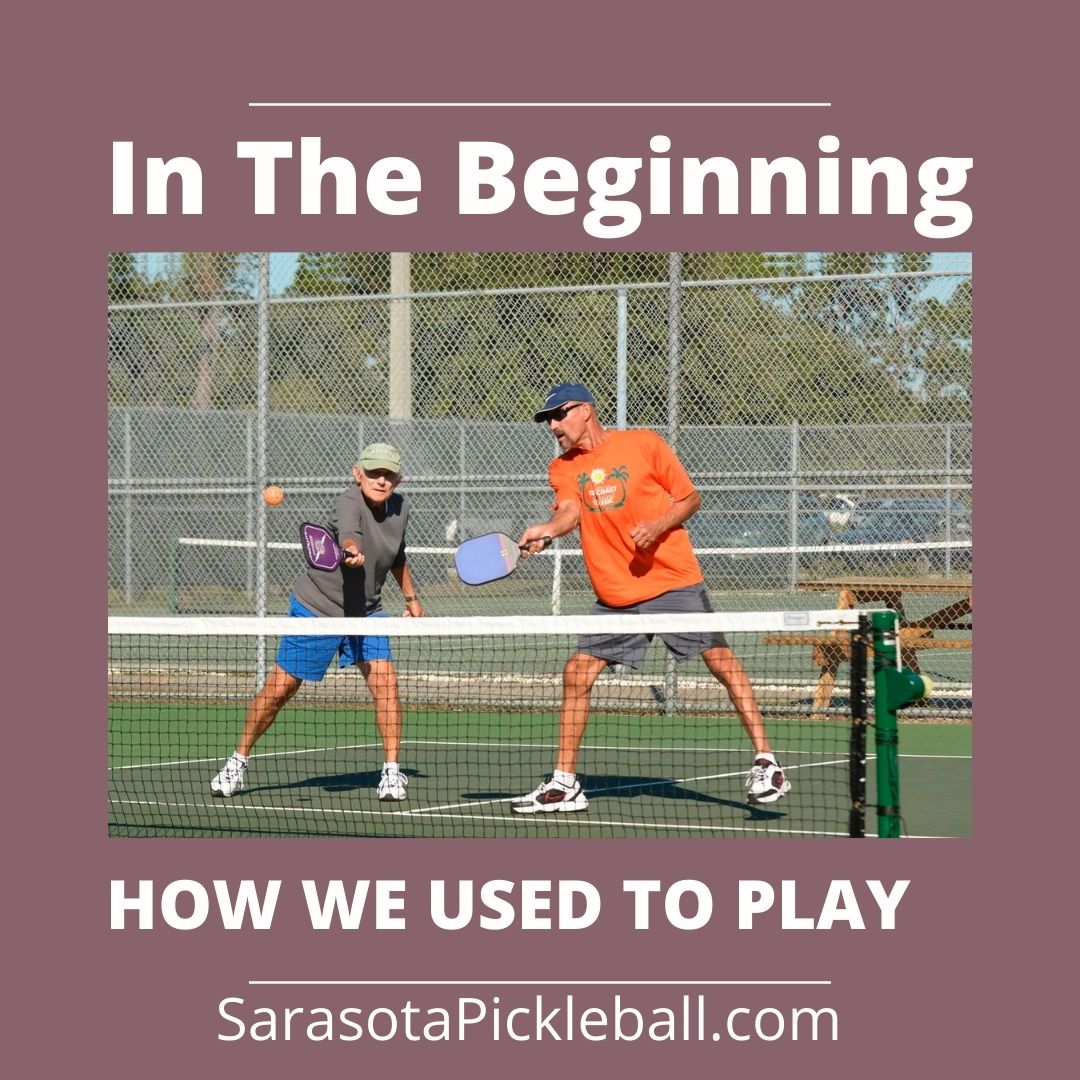
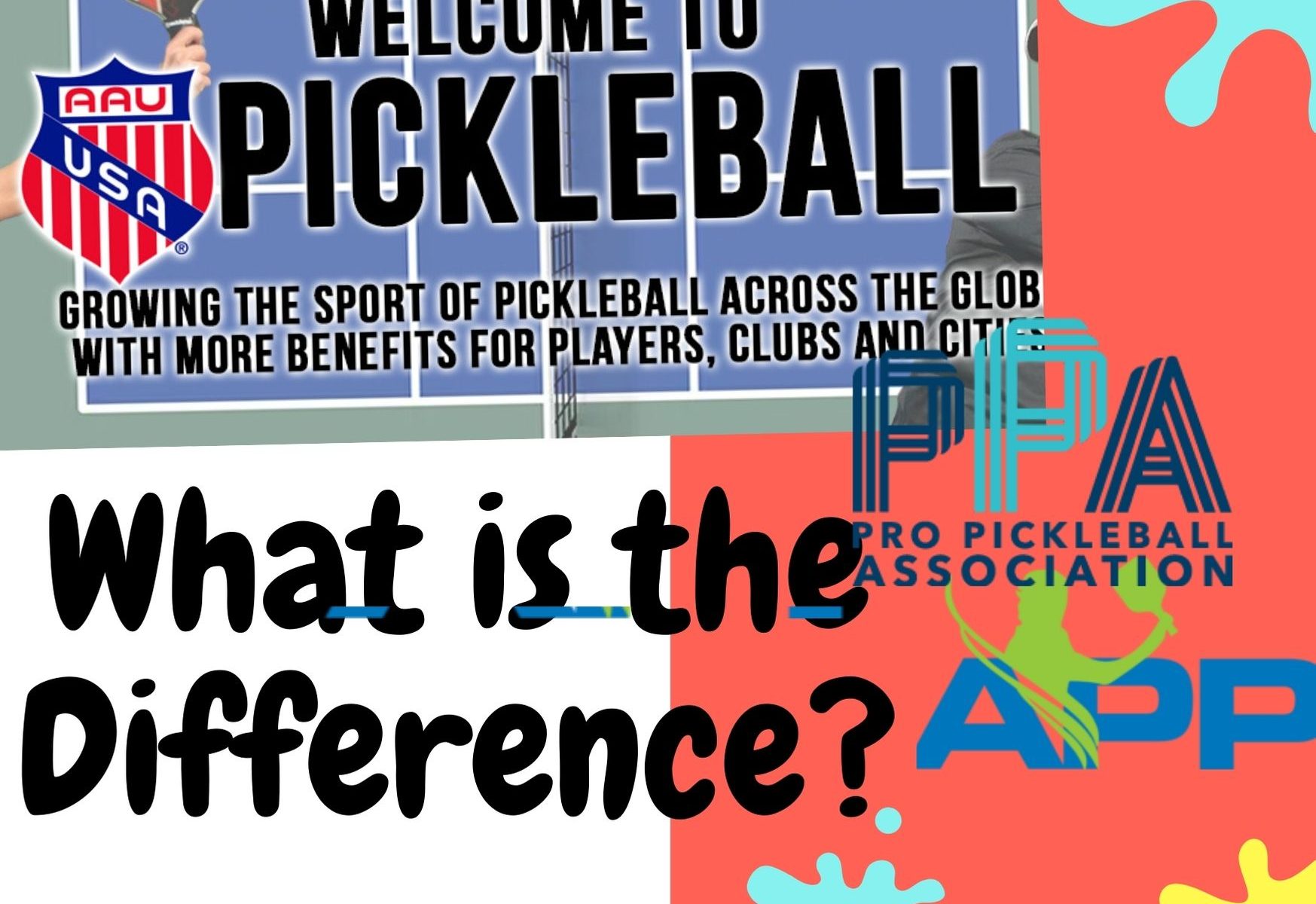

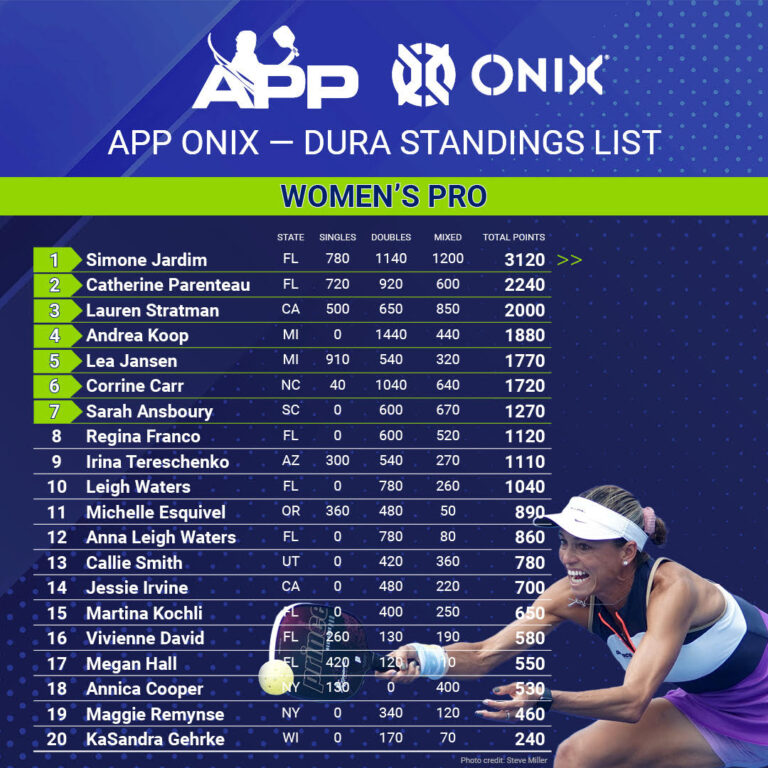

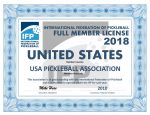
 Let’s not forget the AAU Pickleball. (Amateur Athletic Union) Athletes Pursuing Greatness
Let’s not forget the AAU Pickleball. (Amateur Athletic Union) Athletes Pursuing Greatness
